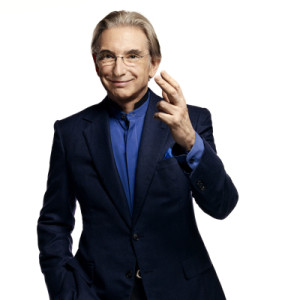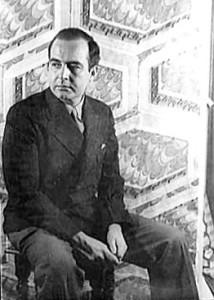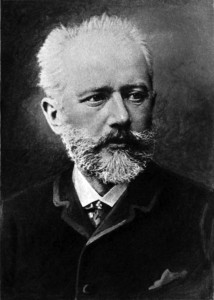 The San Francisco Symphony, Music Director Michael Tilson Thomas conducting, presented Russian and American classics, October 3, 2015. The program embodied the great, universal emotions and actions of Tchaikovsky’s Symphony #6 in B minor, Opus 74, the Pathetique, and the intimate, personal emotions of specific memory in Samuel Barber’s, Knoxville: Summer of 1915, Opus 24. The fascinating program led to thoughts of how great art connects us to one another by starting with the most singular, immediate experiences to find the universal or starting with the grandest, earth spanning experience to find it again in the solitary, human heart.
The San Francisco Symphony, Music Director Michael Tilson Thomas conducting, presented Russian and American classics, October 3, 2015. The program embodied the great, universal emotions and actions of Tchaikovsky’s Symphony #6 in B minor, Opus 74, the Pathetique, and the intimate, personal emotions of specific memory in Samuel Barber’s, Knoxville: Summer of 1915, Opus 24. The fascinating program led to thoughts of how great art connects us to one another by starting with the most singular, immediate experiences to find the universal or starting with the grandest, earth spanning experience to find it again in the solitary, human heart.
 Composer Samuel Barber wrote Knoxville: Summer of 1915 soon after reading James Agee’s prose poem of that name. Although Barber grew up in West Chester, Pennsylvania, and Agee in Knoxville, Tennessee, they shared childhood experiences of lying on family back yards in the summer evenings, porches, main streets, trolleys, family characters. The music matched to Barber’s selections from Agee’s work encapsulates that time and place so clearly imprinted in individual American lives. Program note writer, James M. Keller, quotes American opera star Leontyne Price: “As a Southerner, it expresses everything I know about my roots and about my mama and father…my home town….You can smell the South in it.” Guest artist, soprano Susanna Phillips has a lovely stage presence and sang well. She was sometimes overpowered by the orchestra which made the lyrics hard to understand, but, when she was heard clearly, she succeeded in presenting the peaceful contentment of a summertime full of familiar events and happy to be uneventful.
Composer Samuel Barber wrote Knoxville: Summer of 1915 soon after reading James Agee’s prose poem of that name. Although Barber grew up in West Chester, Pennsylvania, and Agee in Knoxville, Tennessee, they shared childhood experiences of lying on family back yards in the summer evenings, porches, main streets, trolleys, family characters. The music matched to Barber’s selections from Agee’s work encapsulates that time and place so clearly imprinted in individual American lives. Program note writer, James M. Keller, quotes American opera star Leontyne Price: “As a Southerner, it expresses everything I know about my roots and about my mama and father…my home town….You can smell the South in it.” Guest artist, soprano Susanna Phillips has a lovely stage presence and sang well. She was sometimes overpowered by the orchestra which made the lyrics hard to understand, but, when she was heard clearly, she succeeded in presenting the peaceful contentment of a summertime full of familiar events and happy to be uneventful.
 Tchaikovsky’s Symphony #6 can trick the listener into a mistaken, waltz induced optimism. The first movement, Adagio–Allegro non troppo, begins with very low, very quiet notes. It is slow and serious; it may foreshadow doom. The next two movements are so unlike the first that one might think they were randomly put together for the Pathetique. They demonstrate the extent of Tchaikovsky’s gift for variety of emotion and style. He expresses the range of human feelings in the glorious melody and inventive rhythms he creates. The second movement, Allegro con grazia, seems to promise triumph, life embracing life. Then, in the third, Allegro molto vivace, a march insistently piles cloud upon cloud and marches onward as though lines of marchers overtake each other in near collision, force multiplying force. It ends with enormous bursts of energy, always convincing the listener, even the listener who has heard it before, that this is how it will end. It does not. Out of the breath between the movements, the lament arises. Adagio lamentoso –Andante, the final movement, harkens back to the beginning but takes us further as we have already traveled through other worlds created by the life in the middle of the symphony. The music has changed and has changed us. Its nearly unbearable sadness encompasses the greatness of human life and the painful secret of human life. It ends quietly as though the sound itself has no sound. Tchaikovsky died just nine days after the premiere. The San Francisco Symphony contributed a noble performance of this universal masterpiece.
Tchaikovsky’s Symphony #6 can trick the listener into a mistaken, waltz induced optimism. The first movement, Adagio–Allegro non troppo, begins with very low, very quiet notes. It is slow and serious; it may foreshadow doom. The next two movements are so unlike the first that one might think they were randomly put together for the Pathetique. They demonstrate the extent of Tchaikovsky’s gift for variety of emotion and style. He expresses the range of human feelings in the glorious melody and inventive rhythms he creates. The second movement, Allegro con grazia, seems to promise triumph, life embracing life. Then, in the third, Allegro molto vivace, a march insistently piles cloud upon cloud and marches onward as though lines of marchers overtake each other in near collision, force multiplying force. It ends with enormous bursts of energy, always convincing the listener, even the listener who has heard it before, that this is how it will end. It does not. Out of the breath between the movements, the lament arises. Adagio lamentoso –Andante, the final movement, harkens back to the beginning but takes us further as we have already traveled through other worlds created by the life in the middle of the symphony. The music has changed and has changed us. Its nearly unbearable sadness encompasses the greatness of human life and the painful secret of human life. It ends quietly as though the sound itself has no sound. Tchaikovsky died just nine days after the premiere. The San Francisco Symphony contributed a noble performance of this universal masterpiece.
The program opened with the West Coast premiere of Dispatches (2014) by Ted Hearne. MTT introduced the work by offering an idea of how to experience it, greatly appreciated advice.The work was commissioned by the San Francisco Symphony and the New World Symphony, based in Florida and founded by Michael Tilson Thomas. Dispatches challenges the audience by abrupt changes between expressing traditionally “musical” music and excursions into sound design, the composer’s re-do of Stevie Wonder, mechanically rearranging electronic sounds, and more. At one point, a voice emerged, shouting out something hard to understand. It was easy to assume it was part of the sound mix, but from the looks on the faces of the musicians, it was not. The work was conducted by Christian Reif.
 POST-SCRIPT: THE AUDIENCE Performers say they can feel the energy or attention or lack of either in their audience. The other 1999 people in the concert hall can affect one’s experience of the music. Antsy, noisy, clasping their brightly lit cell phones, quiet, attentive; they make a difference. The convention of not applauding after a movement in a symphony is not something everyone knows. In the course of experiencing Tchaikovsky’s 6th, it can make a huge difference if many in the audience burst into applause at the end of the third movement which is not the end of the symphony. That and a loud call for “Encore” happened October 3. MTT turned part of the way around on his podium and said that he just happened to have something more. Yes, the fourth movement. While feeling prickly, after a while one must recognize the good news: this audience cadre is (1) here and (2) excited and pleased about what they are hearing. All of that is good.
POST-SCRIPT: THE AUDIENCE Performers say they can feel the energy or attention or lack of either in their audience. The other 1999 people in the concert hall can affect one’s experience of the music. Antsy, noisy, clasping their brightly lit cell phones, quiet, attentive; they make a difference. The convention of not applauding after a movement in a symphony is not something everyone knows. In the course of experiencing Tchaikovsky’s 6th, it can make a huge difference if many in the audience burst into applause at the end of the third movement which is not the end of the symphony. That and a loud call for “Encore” happened October 3. MTT turned part of the way around on his podium and said that he just happened to have something more. Yes, the fourth movement. While feeling prickly, after a while one must recognize the good news: this audience cadre is (1) here and (2) excited and pleased about what they are hearing. All of that is good.
This Hedgehog has maintained the childhood habit of counting up how many movements are coming at the beginning of each piece on a program. Many in the audience read their programs while the music is being played; one might hope they would count, too. On October 21, 2001, Maestro Stanislaw Skrowaczewski led the SFS in performance of his own work, Music at Night, and Tchaikovsky’s 4th. Before beginning the symphony, Skrowaczewski turned to the audience and asked them to remember that despite the long pause before the final movement, the symphony was not yet over. It helped, though this Hedgehog gasped audibly at the end of the third movement, her emotions having been strained to breaking. SEE: Interview with Skrowaczewski in The Hedgehog, Vol.4, No.1, Fall, 2006.
Pictures: Michael Tilson Thomas, courtesy of the San Francisco Symphony; Samuel Barber, photo by Carl Van Vechten, 1944; Susanna Phillips; Tchaikovsky; Davies Symphony Hall, courtesy of the San Francisco Symphony.
